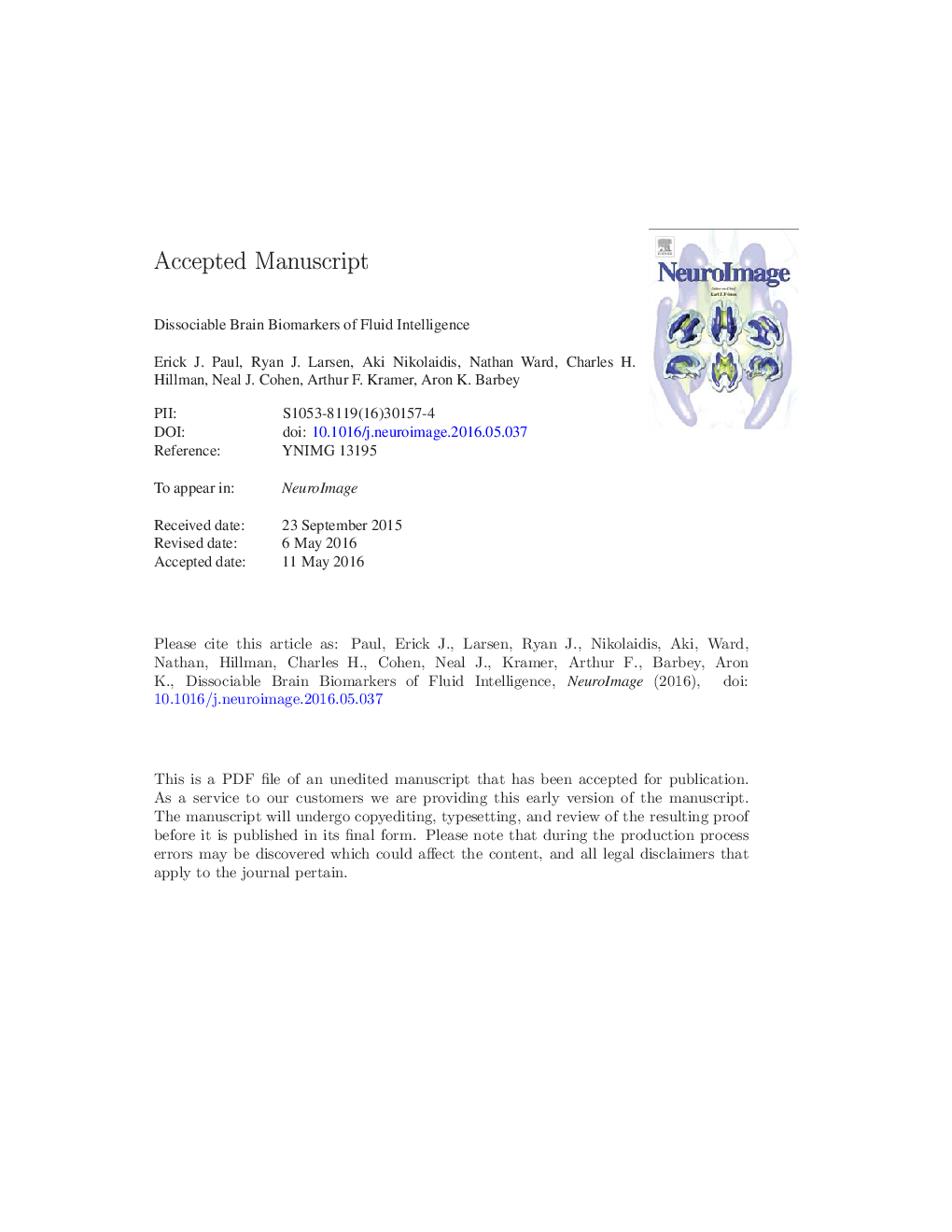| Article ID | Journal | Published Year | Pages | File Type |
|---|---|---|---|---|
| 6023281 | NeuroImage | 2016 | 30 Pages |
Abstract
Cognitive neuroscience has long sought to understand the biological foundations of human intelligence. Decades of research have revealed that general intelligence is correlated with two brain-based biomarkers: the concentration of the brain biochemical N-acetyl aspartate (NAA) measured by proton magnetic resonance spectroscopy (MRS) and total brain volume measured using structural MR imaging (MRI). However, the relative contribution of these biomarkers in predicting performance on core facets of human intelligence remains to be well characterized. In the present study, we sought to elucidate the role of NAA and brain volume in predicting fluid intelligence (Gf). Three canonical tests of Gf (BOMAT, Number Series, and Letter Sets) and three working memory tasks (Reading, Rotation, and Symmetry span tasks) were administered to a large sample of healthy adults (n = 211). We conducted exploratory factor analysis to investigate the factor structure underlying Gf independent from working memory and observed two Gf components (verbal/spatial and quantitative reasoning) and one working memory component. Our findings revealed a dissociation between two brain biomarkers of Gf (controlling for age and sex): NAA concentration correlated with verbal/spatial reasoning, whereas brain volume correlated with quantitative reasoning and working memory. A follow-up analysis revealed that this pattern of findings is observed for males and females when analyzed separately. Our results provide novel evidence that distinct brain biomarkers are associated with specific facets of human intelligence, demonstrating that NAA and brain volume are independent predictors of verbal/spatial and quantitative facets of Gf.
Related Topics
Life Sciences
Neuroscience
Cognitive Neuroscience
Authors
Erick J. Paul, Ryan J. Larsen, Aki Nikolaidis, Nathan Ward, Charles H. Hillman, Neal J. Cohen, Arthur F. Kramer, Aron K. Barbey,
